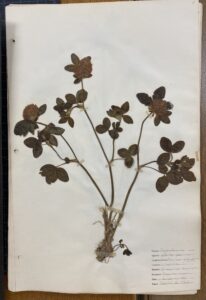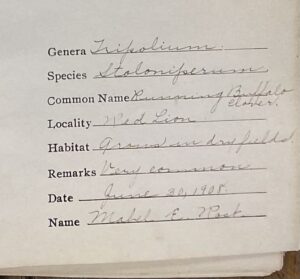Pennsylvania plants in Special Collections & Archives
An herbarium is a collection of plant specimens and associated data used for scientific study. Significant examples of herbaria are held in botanical gardens, museums, and universities around the world. These libraries of dried plant specimens help preserve the historical record of changes in vegetation and allow researchers to explore how and when plants become extinct in certain areas, or how they may have spread to other regions over time.
But what happens to amateur herbaria, and what stories might these objects and their specimens tell us about the natural world when they were created? A new acquisition supporting collections related to women’s contributions to science, technology, and mathematics in Special Collections and College Archives opens the door to such questions, and is now available for further research.
The herbarium compiled by Mabel E. Rast around 1908 in York County, Pennsylvania includes examples, or types, of plant specimens pressed onto paper. Rast affixed into the portfolio large herbal samples and added handwritten notes for the genera, species, common name, and location for each of the plants. She also commented on whether the flora were cultivated or indigenous, whether they were found locally in Pennsylvania, and the habitat and time in which they were prone to grow.
The Mabel Rast herbarium allows researchers an opportunity to examine both the “common” and “uncommon” flora of a region of North American at a specific time. For example, Rast included running buffalo clover (Trifolium stoloniferum) a type of perennial clover which has experienced habitat loss due to development and agriculture. Like this clover, other specimens in the collection tell the story of flora that may have disappeared from the landscape, as well as ones that have gained a foothold. The herbarium also shows how the Victorian art of flower pressing carried on into the 20th century as a way for women to categorize and explore the natural world. Through further research, we hope to learn more about the types of flora contained, and if any of the specimens are of plants which might be imperiled, or at risk in North America.

